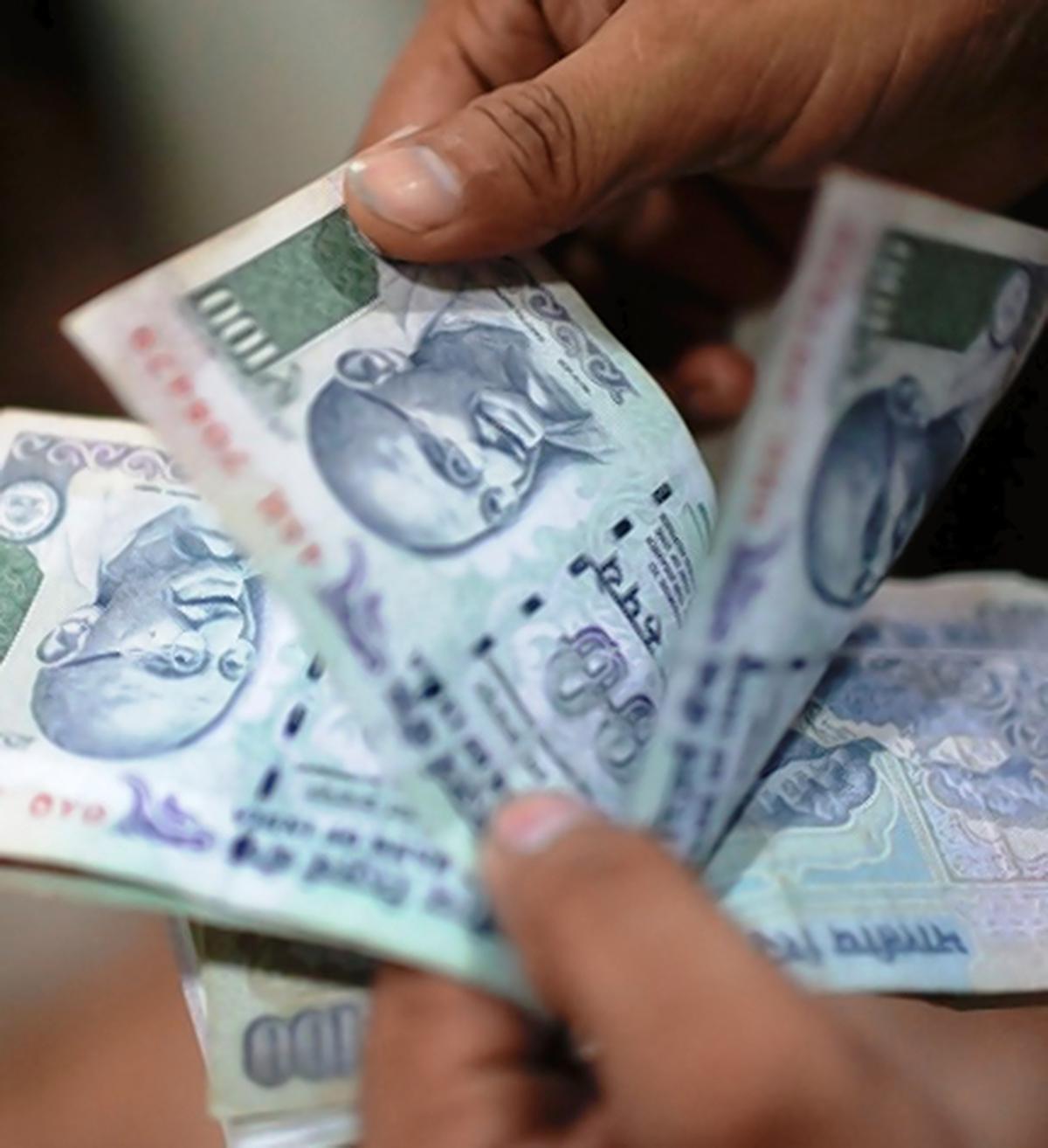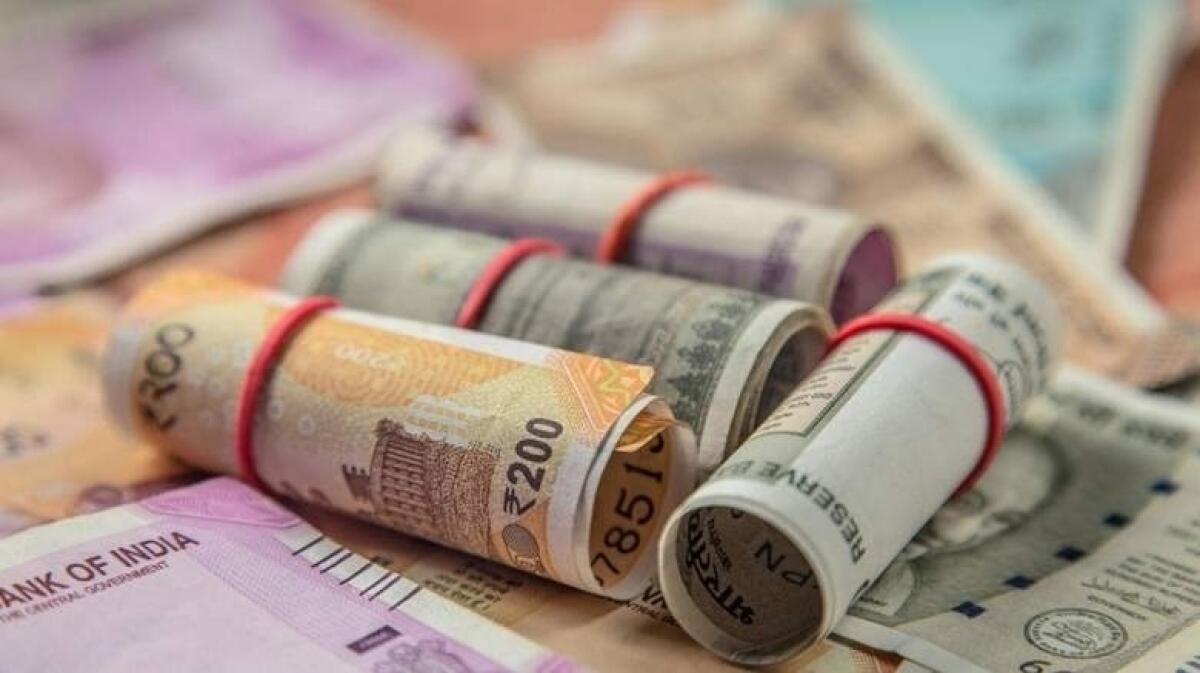In early trade, the Indian rupee falls against the UAE Dirham

In early trade, the Indian rupee falls against the UAE Dirham
The strength of the US dollar in the international market caused the Indian rupee to weaken by 12 paise to 79.90 US cents (21.77 UAE dirham) in Tuesday’s opening trading. The rupee began trading at 79.80 versus the dollar on the Indian interbank foreign currency market, then dropped further to 79.90, losing 12 paise from its previous close. To end the day on Monday at 79.78 versus the dollar, the rupee gained 9 paise.
The dollar index, a measure of the strength of the dollar versus a basket of six different currencies, increased 0.08 per cent to 109.62. The dollar index weakened marginally from its 110 level while the rupee started the day at 79.80. Anil Kumar Bhansali, Head of Treasury, Finrex Treasury Advisors, added that the euro and the British pound both increased after experiencing a sharp decline because of Russian gas problems.
According to Bhansali, the range is anticipated to be between 79.50 and 80. “The US dollar was strongly bid as the rupee sank to 79.90 levels before recovering to 79.85 levels,” he added. Brent crude futures, the benchmark for all crude oil, fell 0.8 per cent to $94.97 a barrel.
The 30-share BSE Sensex, which measures the performance of the Indian equities market, was up 12.49 points, or 0.02 per cent, at 59,258.47, while the NSE Nifty, a measure of the market’s overall health, gained 7.80 points, or 0.04 per cent, to 17,673.60. According to exchange statistics, foreign institutional investors were net sellers on Monday in the capital market, selling shares worth Rs. 8.11 billion.
Why It Is Hard for India to Trade in Rupees
.jpg)
Saving currency outflows becomes even more crucial for the RBI at a time when the value of the rupee versus the US dollar is falling every week.
The Reserve Bank of India permitted the billing of foreign commerce in rupees in July of this year. This was one of RBI’s initiatives to maintain the stability of the Indian rupee and minimize the use of the US dollar.
The RBI loosened the rules governing Vostro accounts, enabling excess cash to be placed in Indian treasury bills and government bonds. However, it appears that most Indian banks are hesitant to use the trading mechanism out of concern about repercussions from US authorities.
Why Is The RBI Preferring To Handle Payments In Indian Rupees?
This action will lessen India’s reliance on US money. The recent decision by the RBI to permit international trade in rupees is anticipated to lessen the strain on India’s foreign exchange reserves because the country is a net importer and the value of the rupee has been steadily dropping.
Saving currency outflows becomes even more important for the RBI at a time when the value of the rupee versus the US dollar is falling every week.
Why Are Banks Unwilling?

Rupee payments for imports would enable India to get over trade sanctions placed on Russia and other trading partners.
After Iran was under sanctions a few years ago, the RBI had previously also permitted foreign trading in rupees. Now that Russia is subject to US sanctions, RBI has resumed allowing rupee transactions.
Due to sanctions, a significant portion of bilateral commerce between India and Russia is being settled in rupees.
As stated in the previous statement, Indian importers using this mechanism will make payments in INR against the invoices for goods or services supplied by overseas sellers and suppliers, which will then be credited to the Special Vostro account of the correspondent bank of the partner country.” A Rupee Vostro account is a rupee account held by a foreign bank with an Indian bank in India. Through these Rupee Vostro accounts, foreign parties would be able to transfer and receive money from Indian exporters and importers.
According to sources, banks are hesitant to use this method, and only a small number of banks have so far created Vostro accounts with Russian banks. According to a report in the Economic Times, banks want the RBI and the government to provide them with specific instructions to protect them against any action by the US authorities.
According to the news source, since there are private banks that are listed on US exchanges, banks may be asking for specific assurance from the government and RBI. Amid the deadlock, the finance ministry will host a conference on Wednesday with representatives from all interested parties, including banks and the external affairs and commerce ministries, to explore how to encourage cross-border trade in the rupee rather than the US currency.
What Does Foreign Trade Settlement In Rupees Mean?
Payments for products and services imported and exported by countries must be made in a foreign currency, which is often the US dollar. In this arrangement, the conversion costs are shared by the importer and exporter. The invoice will be paid in Indian rupees via a Vostro account with trade settlement in rupees rather than paying and receiving US dollars.
The decision aims to facilitate commerce with nations like Russia and Sri Lanka.
For nations like Sri Lanka, whose economy has stalled owing to a sharp decline in foreign exchange reserves, the US dollar’s strength relative to the majority of other currencies makes imports costly. Trading in the Indian rupee would be better for Sri Lanka since its currency depreciates less against it than it does against the US dollar.
edited and proofread by nikita sharma





